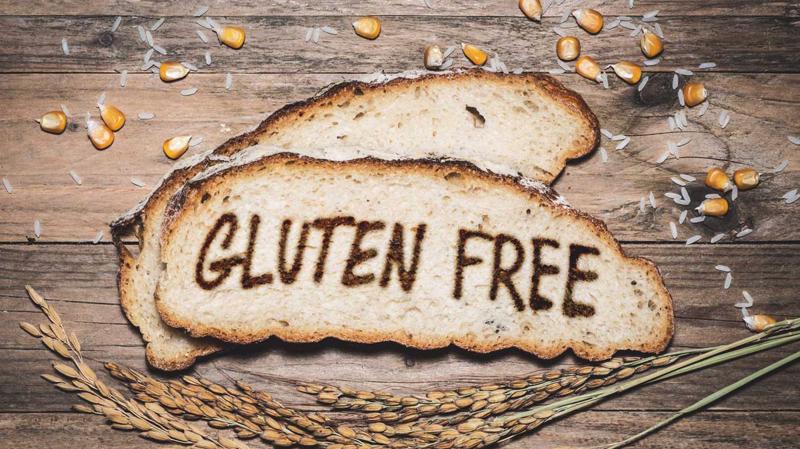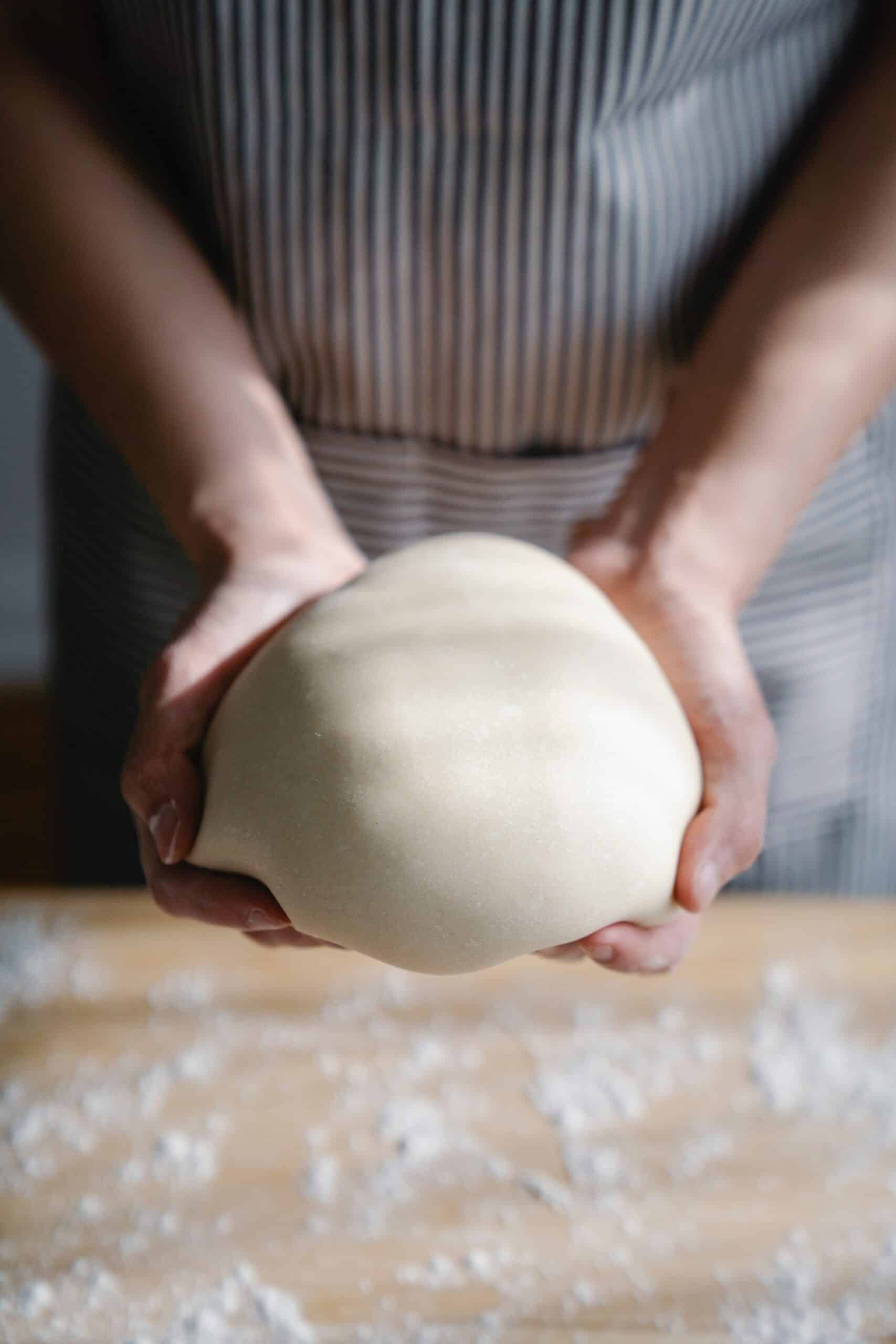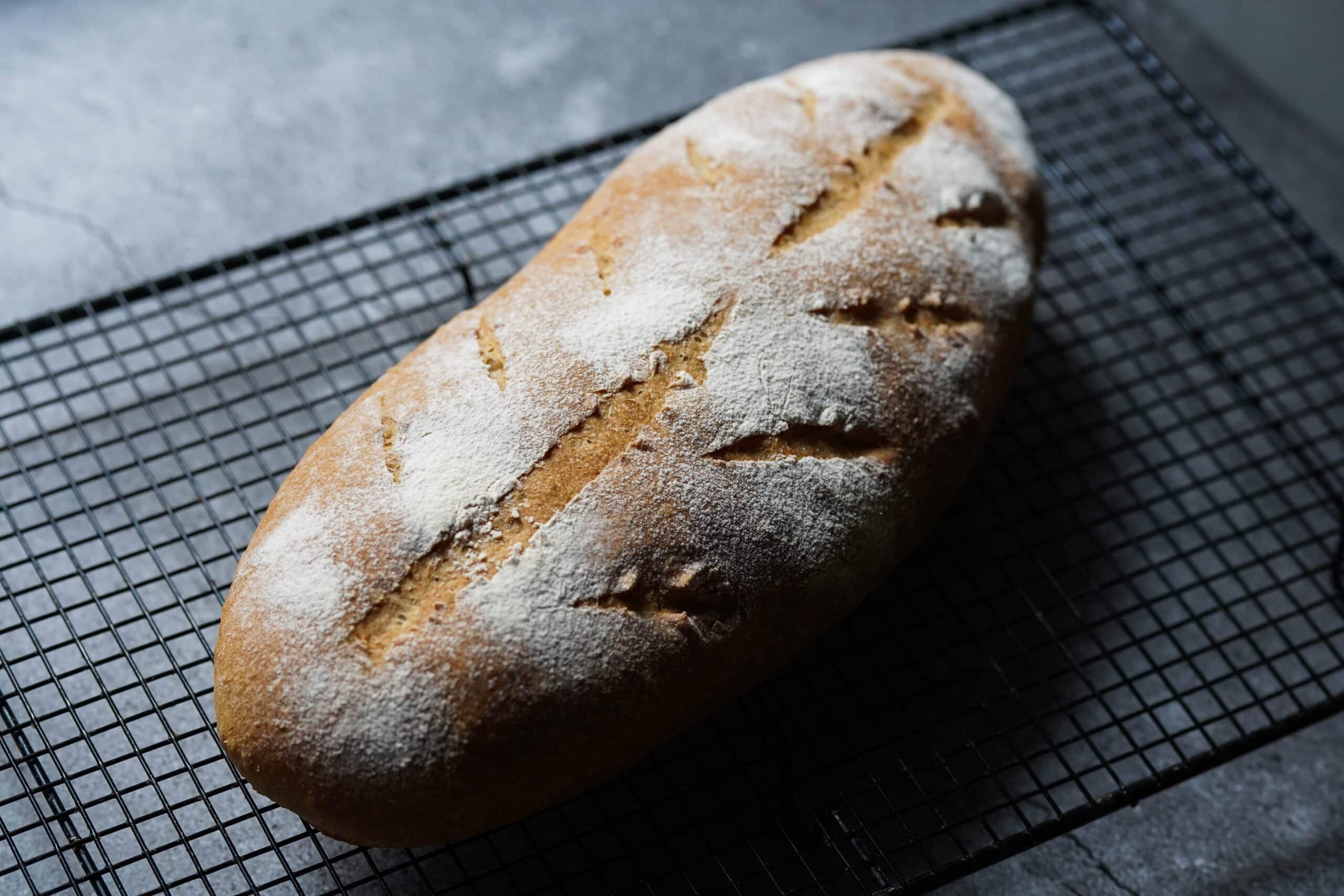Are you a fan of sourdough bread and curious about whether is sourdough bread gluten-free? If so, you have come to the right place. In this blog post, we’ll discuss what exactly makes sourdough bread special compared to other kinds of breads as well as clear up whether or not it is in fact considered gluten-free. We will answer common questions like what goes into creating an authentic loaf of traditional sourdough and how certain dietary requirements can be accommodated when making it at home. So if you’ve ever been intrigued by the idea of making your own delicious loaves from scratch, read on!
What is Gluten and Why is It Bad?
Gluten is a protein found in certain grains, like wheat, barley and rye. It’s the main ingredient in many foods like bread, pasta, cereal and pizza dough. People with celiac disease or gluten sensitivity have an adverse reaction to gluten which can cause abdominal pain and bloating as well as fatigue and other symptoms. While not all people who are sensitive to gluten suffer from celiac disease, an increasing number of people are avoiding it in their diets for health reasons.

Eliminating gluten from the diet can be beneficial for those with a sensitivity or intolerance to it and may even help improve overall health and well-being. Research has suggested that eliminating gluten may reduce inflammation which may be beneficial for people with certain digestive disorders such as irritable bowel syndrome (IBS). Additionally, some studies have indicated that following a gluten-free diet may help reduce the risk of certain cancers and autoimmune diseases.
However, it’s important to note that not everyone needs to follow a gluten-free diet. Unless you have celiac disease or a gluten sensitivity, there is generally no reason to eliminate gluten from your diet. For those people who do not have celiac disease, eating foods that contain gluten should not be cause for concern. If you are uncertain about whether you should avoid gluten in your diet, it’s best to consult with a healthcare professional.
What is sourdough bread?
Sourdough bread is a type of bread that has been made for centuries using a combination of flour and water, which is then allowed to ferment. This fermentation process creates lactic acid and wild yeasts, which give the dough its characteristic tangy flavor. It also allows sourdough breads to stay fresh without preservatives or artificial flavorings. The result is a unique, complex flavor that can be both sweet and savory.
Difference Between Traditional Sourdough Bread & Gluten-Free Sourdough
Traditional sourdough bread is made with a combination of flour, water, and yeast or bacteria. The dough is then left to ferment for several hours or days in order to develop its special texture. This fermentation process gives the dough its signature flavor and allows it to rise much more than regular breads.
Gluten-free sourdough bread, on the other hand, is made with specially formulated gluten-free flours. These flours provide a base for the dough that is free from gluten and can also be combined with other ingredients like xantham gum or psyllium husk in order to create a more authentic texture.
Benefits of Eating a Gluten-free Sourdough Bread
Eating a gluten-free sourdough bread offers several benefits for those with dietary restrictions. For one, it is easier to digest than traditional wheat flours since the fermentation process breaks down some of the gluten proteins in the flour. This can help reduce symptoms associated with gluten intolerance or celiac disease.
Where does sourdough bread come from?
Sourdough bread has been a staple in many cultures for centuries. It originated in Ancient Egypt, where it was used as an edible wrapper to cook food on hot stones. In the United States, sourdough bread is most closely associated with the California Gold Rush of 1849, when French miners brought their traditional baguettes and other sourdough recipes with them to the West Coast. Today, sourdough bread is enjoyed all over the world and can be found in many different shapes and sizes.
See also: How many slices of bread in a loaf
Does Fermentation Break Down Gluten?

No, fermentation does not break down gluten. Although some traditional methods of preparing grains like sourdough and sprouting may reduce the amount of gluten present in certain foods, they do not completely eliminate it. So even if a food has gone through a fermentation process, it may still contain trace amounts of gluten. If you have celiac disease or a gluten sensitivity, it is important to check the label of any fermented foods you are consuming to ensure that they do not contain gluten or risk getting sick.
For people with celiac disease and other forms of gluten intolerance or sensitivity, avoiding gluten is essential for improving their health. It’s best to consult with a healthcare professional to determine if a gluten-free diet is right for you. If it is, there are many delicious and nutritious options available that can be enjoyed without compromising your health.
Must-Know Facts About Sourdough Bread and Gluten
Sourdough bread is often touted as a gluten-free alternative to regular bread, but this isn’t necessarily true. Although some traditional methods of preparing grains like sourdough and sprouting may reduce the amount of gluten present, they do not completely eliminate it. So even if a sourdough bread is made with wheat flour, it may still contain trace amounts of gluten.

That being said, some people who are sensitive to gluten may be able to tolerate smaller amounts found in sourdough bread more easily than regular wheat bread due to the fermentation process which breaks down some of the proteins present in wheat flour. If you have celiac disease or a gluten sensitivity, it is important to check the label of any sourdough breads you are consuming to ensure that they do not contain gluten or risk getting sick.
Additionally, it is important to note that not all sourdough breads are created equal. Many commercial brands of sourdough may not actually be made with true sourdough starter, which is what gives the bread its unique flavor and texture. It is best to look for breads that are labeled as “true sourdough” or that list only natural ingredients like flour, water, salt, and yeast in order to ensure you are getting a true sourdough product.
Why Sourdough Bread Isn’t Gluten-Free
Sourdough bread is often touted as a gluten-free alternative to regular wheat bread, but this isn’t necessarily true. Although some traditional methods of preparing grains like sourdough and sprouting may reduce the amount of gluten present, they do not completely eliminate it. So even if a sourdough bread is made with wheat flour, it may still contain trace amounts of gluten.
Additionally, many commercial brands of sourdough may not actually be made with true sourdough starter, which is what gives the bread its unique flavor and texture. It is best to look for breads that are labeled as “true sourdough” or that list only natural ingredients like flour, water, salt, and yeast in order to ensure you are getting a true sourdough product.
If you have celiac disease or a gluten sensitivity, it is important to check the label of any sourdough breads you are consuming to ensure that they do not contain gluten or risk getting sick. For those people , avoiding gluten is essential for improving their health, and consulting with a healthcare professional is the best way to determine if a gluten-free diet is right for them. If it is, there are many delicious and nutritious options available that can be enjoyed without compromising your health.

For people who are not sensitive to gluten, sourdough bread is generally a safe and delicious option. Not only does it have a unique flavor that sets it apart from other types of bread, but its longer fermentation process also helps to break down proteins, making it easier for some people to digest. It is also a great source of fiber and other essential vitamins and minerals. Whether you are gluten-sensitive or not, sourdough bread can be a healthy and tasty addition to your diet.
When it comes to gluten-free diets, there are a few things that you should keep in mind. First, it is important to consult with a healthcare professional to determine if a gluten-free diet is right for you. Second, even if a food is labeled as “gluten-free,” it may still contain trace amounts of gluten, so it is important to read the label carefully. And finally, if you have celiac disease or a gluten sensitivity, it is essential to avoid all sources of gluten in order to protect your health and improve your wellbeing.
How To Know If Your Sourdough Bread is Gluten Free
Although some people with celiac disease or a gluten sensitivity may be able to tolerate trace amounts of gluten found in sourdough bread more easily than regular wheat bread, it is still important to check the label of any sourdough breads you are consuming to ensure that they do not contain gluten.
- When selecting a sourdough bread, look for one that is labeled “gluten-free” or made with only natural ingredients like flour, water, salt, and yeast. Additionally, it is also important to check the label of any commercial brands of sourdough to make sure they are actually made with true sourdough starter. This will ensure that you are getting a true sourdough product that is free of gluten.
- For people with celiac disease or a gluten sensitivity, it is essential to avoid all sources of gluten in order to protect their health and improve their wellbeing. For those individuals, consulting with a healthcare professional is the best way to determine if a gluten-free diet is right for them. If it is, there are many delicious and nutritious options available that can be enjoyed without compromising their health.
By keeping these tips in mind and reading the label carefully, you can enjoy the delicious taste of sourdough without worrying about potential health risks. For those with a gluten sensitivity or celiac disease, consulting with a healthcare professional is the best way to determine if a gluten-free diet is right for them and what types of foods are safe for consumption. With proper guidance and careful selection of gluten-free products, you can enjoy the delicious taste of sourdough without compromising your health.
Where to find gluten-free sourdough bread
Gluten-free sourdough bread can be found in many grocery stores and health food markets. It is also possible to find it online at specialty retailers or from artisan bakers, who may sell directly to customers. When purchasing gluten-free sourdough bread, make sure to check the label carefully and choose a product that is made with natural ingredients and does not contain any added gluten. This will help to ensure that you are getting a true sourdough product that is free of gluten.

Ultimately, whether or not you are following a gluten-free diet, there are many delicious options available when it comes to sourdough bread. With careful selection and reading the label to make sure it is free from gluten, you can enjoy the unique flavor of true sourdough without compromising your health.
Tips on Making a Delicious Gluten-free Sourdough Loaf
The key to making a delicious gluten-free sourdough bread is to use the right ingredients. Start by selecting a good quality gluten-free flour blend, such as Bob’s Red Mill Gluten Free All Purpose Flour or Pamela’s Gluten Free All-Purpose Baking Mix. Be sure to also use active dry yeast or a sourdough starter in order to jumpstart the fermentation process.
Finally, don’t forget to add plenty of flavor and texture with a variety of mix-ins like nuts, seeds, dried fruits, or herbs. This will not only make your bread taste great but also give it a unique look that will impress everyone who taste it.
Recipe for making sourdough bread gluten-free
Making gluten-free sourdough bread at home is actually quite straightforward. All you need are some basic ingredients, a few tools, and about five days of patience! Here’s what you’ll need to get started:
• 2 cups gluten-free flour blend (such as rice or almond flour)
• 1 teaspoon active dry yeast
• 2 teaspoons sea salt
• 2 cups warm water
To begin, mix the flour, yeast and salt together in a large bowl until everything is well combined. Slowly add in the warm water and stir until a thick batter forms. Cover the bowl with a piece of cheesecloth or kitchen towel and let the mixture ferment at room temperature for 24-48 hours. After this time, discard any excess liquid and knead the dough until it is smooth. Shape the dough into a loaf or rolls and place on a baking sheet lined with parchment paper. Preheat your oven to 350F (175C) and bake for 30-40 minutes, or until the bread is golden brown and crispy. Enjoy!
Conclusion: is sourdough bread is gluten-free
While many people believe that is sourdough bread is gluten free, this is not actually the case. Sourdough bread contains gluten, but it may be more tolerable for some people with celiac disease or a gluten intolerance because of the fermentation process. If you are looking for a truly gluten free option, there are other types of bread available that do not contain any traces of wheat, barley, or rye.
FAQs: sourdough bread
Is gluten-free sourdough fermented?
An age-old alchemy of flour and water begins with a sourdough starter, which transforms these simple ingredients into an active culture. This wild fermentation process creates a symbiotic relationship between the two where yeasts and bacteria join together to produce extraordinary flavor!
Is sourdough good for immune system?
Sourdough bread can give your immune system a powerful boost due to the lactic acid found within, which helps encourage growth of healthy gut bacteria. Enjoy it today for military-grade defense against illness!
How much gluten is in sourdough bread?
Whether yeasted or sourdough, regular bread is nothing to sneeze at when it comes to gluten content – with a whopping 124,000 ppm in your average loaf. But even after the long fermentation process of making sourdough breads, they still contain around 200ppm – proving that there’s no such thing as truly gluten-free toast!
Is sourdough bread high in carbs?
Sourdough may be one of the most beloved breads, but unfortunately it isn’t keto-friendly. Standard sourdough is made with all-purpose flour which typically comes from wheat and has high carb content – making this classic loaf off limits for anyone following a strict low carb diet!
Is sourdough bread good for gluten sensitivity?
Sourdough is a delicious, low-gluten bread alternative that can provide relief for those suffering from IBS and gluten sensitivity or intolerance. With lower levels of fructans than other types of bread, sourdough may be the perfect solution to feeling your best – without giving up enjoyable food!
Does sourdough bread bloat your stomach?
Sarah warns that while sourdough bread made from wheat-based flours can be a delicious treat, indulging in too much may leave us feeling uncomfortably bloated due to all the prebiotics it contains.
Is sourdough bread good for IBS?
If regular bread leaves you feeling bloated and uncomfortable, fear not! Sourdough may just be the answer to your prayers – it’s naturally gluten-free but still offers a unique flavor that will satisfy all of those carb cravings. With sourdough in tow, you can forget about IBS flare-ups while enjoying delicious slices of homemade goodness without guilt!
Is sourdough the healthiest bread?
The latest health trend isn’t a new superfood or miracle smoothie – it’s sourdough bread! Scientists, nutritionists and experts agree that naturally-fermented sourdough is not only tastier but healthier than other types of bread. With its lower glycemic index, fewer gluten contents and easier digestion properties, many believe the ‘joys’ of our morning toast just got more delicious…and nutritious!
What do you eat sourdough bread with?
Sourdough bread is a versatile bread that can be eaten in many different ways. Here are some common ways to enjoy sourdough bread:
- Toasted with butter: Toast a slice of sourdough bread and spread it with butter for a simple and delicious breakfast or snack.
- Sandwiches: Sourdough bread makes a great base for sandwiches, as it has a sturdy texture and a tangy flavor that complements a variety of fillings.
- Bruschetta: Top toasted sourdough bread with diced tomatoes, olive oil, and fresh herbs for a tasty appetizer.
- Grilled cheese: Use sourdough bread for a flavorful twist on the classic grilled cheese sandwich.
- Bread pudding: Stale sourdough bread can be used to make a delicious bread pudding, which can be served as a dessert or breakfast dish.
- Bread crumbs: Sourdough bread can be dried and turned into bread crumbs, which can be used as a coating for fried foods or as a topping for casseroles.
Overall, sourdough bread can be enjoyed in many different ways, and its tangy flavor and hearty texture make it a popular choice for a variety of dishes.
Is sourdough bread inflammatory?
There is some evidence to suggest that sourdough bread may be less inflammatory than other types of bread, but more research is needed to fully understand the potential health benefits.
Sourdough bread is made through a fermentation process, which involves using natural yeast and bacteria to break down the carbohydrates in the dough. This process can lead to the production of certain beneficial compounds, such as lactic acid and acetic acid, which may help to reduce inflammation in the body.
However, it’s important to note that not all sourdough breads are created equal, and the health benefits may depend on factors such as the fermentation time and the ingredients used in the bread. Additionally, if you have a gluten intolerance or celiac disease, you should avoid sourdough bread made from wheat flour, as it still contains gluten.

Bill Dawers is the CEO of naan on broughton, a contemporary Indian restaurant in Savannah, GA. The restaurant opened a few weeks ago and has already found a fan in City Talk columnist Bill Dawers. The restaurant sits right across the street from the Marshall House on Broughton Street, joining the large number of hot spots on the shopping street.

Related Posts:
How Long To Cook Frozen Chicken In A Crock Pot: A Comprehensive Guide
How To Make 3/4 Cup With Measuring Cups? – A Comprehensive Guide
Can you eat Peanut shells? Cracking the Mystery
Does Jasmine Tea Have Caffeine? Learn About Jasmine Tea